The Best Batteries for Your Truck

You depend on your truck to start reliably every time, every day; but then comes a critical moment when you twist the key and your engine fails to come to life. Instead, an insipid clicking of the starter solenoid and dimming of the lights betray a dead battery. It could be snowing or raining, you could be late to work, and instead of getting on your way you’ve got to summon a tow truck to defibrillate your truck back to life.
However, the dreaded no-start scenario can often be avoided by installing a battery of superior durability. A battery that can tolerate repeated charge and discharge cycles and still deliver a jolt of cold cranking amps on a frigid morning.
There are a number of good options on the market. We like absorbed glass mat (AGM) batteries for their superior durability and virtually spill-proof design. While wet cell batteries are less expensive and (generally) more than up to the task of starting your truck, we’ve omitted them from this list because they’re more difficult to ship. If you prefer to buy a wet cell battery, it’s best to visit your local auto pHere we explore some of the best available batteries for your hard-working truck, SUV, or van.
Table of contents
- 1. Editor’s Pick: ACDelco Gold 48AGM
- 2. XS Power D6500 XS Series
- 3. Optima Batteries YellowTop Series
- 4. Odyssey Automotive and LTV Battery
- 5. Optima RedTop Starting Truck Battery
- What is a Battery and What Does it Do?
- What Types of Batteries are Used in Cars and Trucks?
- What are Cold Cranking Amps?
- What is Reserve Capacity?
- What are Group Sizes?
- Battery Safety
1. Editor’s Pick: ACDelco Gold 48AGM
ACDelco is a well-known supplier of automotive parts. This Absorbed Glass Mat (AGM) battery promises a seven-year lifespan, with a warranty to match. The battery employs a high-density paste between the gel mats. This design contributes to a longer lifespan and improved charging properties.
This battery is maintenance-free, which means there's no need to top up the electrolyte with distilled water. A vent cap allows built-up gasses to escape and air to enter while also protecting against leakage—AGM batteries are inherently less leak-prone than traditional flood cell designs.
The high-density paste, AGM format, and robust outer shell make for a reliable, long-life battery for your truck. User reviews praise its ability to hold a charge after sitting idle, and they produce up to 760 CCA (cold cranking amps) for reliable starting, even in the coldest weather.
Traditional lead-acid batteries may be cheaper, but for overall value, we like this ACDelco AGM unit.
Pros | Promises long service life; 7-year manufacturer's warranty |
Cons | More expensive than traditional wet cell batteries |
2. XS Power D6500 XS Series
The XS Series of high-performance batteries boasts over 1,000 CA (cranking amps) to wake up high-performance engines and enough RC (reserve capacity) to keep auxiliary components powered up—even with the engine off.
The M6 bolt terminals and flush-mount design allow you to install this battery in practically any position. This is especially handy on rigs like trophy trucks, where you might want to put your battery in unusual positions for better weight distribution or access.
All batteries in the XS Power line-up are spill-proof and maintenance-free irrespective of group size or orientation.
Pros | High output, can be mounted in various positions |
Cons | Costly, may not last as some others on the market |
3. Optima Batteries YellowTop Series
YellowTop is one Optima's three lines of spiral-wound batteries; there are also BlueTop and RedTop. This one is on our list because it’s designed for high electrical loads, like those you find on hard-working trucks.
Each battery features six spiral-wound lead plates with one positive and one negative side. The advantage of spiral-wound plates over flat plates is density, shock resistance, and longevity. This design allows the battery to function in almost any orientation, and it is both spill-proof and maintenance-free.
The YellowTop range puts out as much as 980 CCA (cold cranking amps) for prodigious cold-starting power and maintains its charge for up to two times longer than conventional flat-plate batteries. Optima claims 140 minutes of reserve power while drawing 25 amps.
The biggest downside to the Optima range is that the manufacturing process is more complex than other batteries. This affects the price and tends to interrupt supply. Of course, they're more expensive too.
Pros | Shock-resistant construction, reliable |
Cons | There have been supply chain issues, cost |
4. Odyssey Automotive and LTV Battery
At 850 CCA (cold cranking amps), this smaller battery from Odyssey still manages to pack some power for starting light trucks. The company offers three-to-four years of warranty on this battery and claims as much as a 10-year lifespan with over 400 cycles at 80 percent depth of discharge.
Odyssey also claims this battery has the fastest recharging time of any comparable battery; it can reach a full charge in four to six hours.
Non-spillable, shock-resistant construction makes it a good fit for off-road trucks and work vehicles. This battery's fast-cycling ability and tolerance to repeated discharging make it a great option for vehicles that do a lot of stop-and-go driving as well.
If there's a drawback it's that the Odyssey is less tolerant of long periods of idleness, meaning it's less shelf-stable than some other batteries.
Pros | Long service life, plenty of cranking amps |
Cons | Heavy, doesn't hold its charge under storage as well as others |
5. Optima RedTop Starting Truck Battery
The Optima RedTop series is their most popular line—we know several classic car collectors who swear by them. Designed to provide maximum starting power even in extreme conditions, these spiral-wound cells offer impressive impact and shock resistance allied with enviable durability.
The RedTop offers 100 minutes of RC (reserve capacity), and your truck battery will almost always have enough juice to refire your engine. We like the energy density offered by the spiral-wound lead plates. We also appreciate its no-spill construction and the fact you can install the battery in almost any configuration you need.
This battery still has some drawbacks: the complex design procedure which makes price and availability inconsistent. Still, it's hard to go wrong with an Optima RedTop.
Pros | High energy density, excellent reserve charge (RC) |
Cons | Can be expensive, Optima has been experiencing supply chain issues |
What is a Battery and What Does it Do?
A battery is an electrochemical device for converting chemical energy into electrical energy. That electrical energy cranks the engine over for starting and powers the ignition system. The battery also acts as a voltage stabilizer for the electrical system. It provides current for limited periods when a vehicle's electrical demands exceed the charging system’s capacity or the charging system isn’t operating correctly.
What Types of Batteries are Used in Cars and Trucks?
We’re dealing here with 12-volt batteries such as are used in fossil-fuel burning trucks and cars to start the engine. Other types like deep cycle storage batteries or batteries used to power electric vehicles are subjects unto themselves.
The majority of automotive batteries are of the “flooded” or “wet” cell lead-acid type, which uses lead plates and acidic electrolyte fluid. While this battery technology is very effective, there are some drawbacks, not the least of which is being full of sulfuric acid. Some wet cell batteries also require occasional topping up with distilled water as the electrolyte is lost to evaporation and the chemical reactions within the battery.
Absorbed Glass Mat (AGM) Batteries
In recent years Absorbed Glass Mat or “AGM” battery technology has become more common. AGM batteries are also lead-acid, but they are packed with fiberglass mat, which absorbs the acid and locks it in place for a nearly spillproof design. They have less internal resistance than wet-cell batteries and are much more tolerant of frequent draining and charging, making them better suited to today’s cars with automatic start/stop technology and full rosters of powered accessories. AGM batteries also perform better in cold weather than traditional wet cell batteries.
While the advantages of AGM batteries are readily apparent, they cost much more than traditional wet cell batteries. We should note that most vehicles with factory-fit AGM batteries are not designed to operate with any other style of battery—consult your owner’s manual to be sure.
What are Cold Cranking Amps?
We’ll spare you a treatise on electrical theory; just consider that amperes, commonly expressed as “amps,” is the measure of the amount of electric charge in motion per unit of time. Think of water flowing through pipes as being analogous to electric current; in such a situation gallons per minute could be thought of like amperes. Now if you’re using that water flow to do work, more is better, right? You can’t spin a hydroelectric plant’s turbines with a garden hose just as you can’t spin your starter motor with the battery from your TV remote control.
Trucks (Generally) Need Larger Batteries Than Cars
With that in mind, it’s no surprise that physically larger batteries generate greater amperage. And, as trucks generally have larger engines than cars they require more amps to turn the engine for starting because there’s more inertia, internal friction, compression, and oil drag to overcome. This is especially true in cold weather when oil is thicker and a battery’s performance is diminished.
In short, Cold Cranking Amps (CCA) is the number of amps a battery can discharge for 30 seconds at 0 degrees Fahrenheit and maintain a voltage of at least 1.2 volts per cell, (7.2 volts total for a 12-volt battery). Battery manufacturers also measure Cranking Amps (CA) and Hot Cranking Amps in the same way as cold cranking amps, the only difference is the temperature at which the test is conducted. As batteries are at their least efficient in extreme cold, the cold cranking amps rating is, arguably, the most important. At the end of the day, the more amps your battery has, the more work it can do.
We'll mention here that you don't always need the biggest and badest battery. A general rule of thumb is that for every cubic inch of engine displacement, a battery should produce one CCA; double for diesel-engined vehicles.
What is Reserve Capacity?
The number of minutes a new, fully charged battery can deliver a current of 25 amps at 80 degrees Fahrenheit without falling below 1.75 volts per cell is its Reserve Capacity (RC). This gives a rough idea of how long a battery might be expected to operate a vehicle’s ignition system and essential accessories after an alternator failure.
What are Group Sizes?
Batteries are classified by group size, which is a number that corresponds to their physical dimensions and terminal location. You should note that a battery’s group size does not necessarily relate to its external dimensions; e.g., a group 35 battery is physically smaller than a group 27.
When buying a battery, the counterperson can check to make sure you’re buying the right size for your truck. Online retailers allow consumers to enter their vehicle’s year, make, model and options to ensure the correct fit before ordering. It’s important to get the correct size for your vehicle because a battery that’s too small may shift in the engine bay, damaging its housing and causing corrosive acid to spill. Of course, too large a battery may simply not fit at all.
Battery Safety
If you plan to install a battery yourself, you should exercise caution. Essentially all automotive starting batteries contain corrosive acid and lead, which are harmful. Most of that lead is inside the battery, but the terminals can still expose you. So, you should wear gloves while working with batteries and wash your hands thoroughly afterward.
Batteries are heavy, so take care when lifting and positioning them. Be careful not to accidentally short the battery by having a wrench or other electrical conductor contact both terminals at once. Doing so can cause sparks and burns and may even result in the battery exploding.
If you have any doubt about your ability to safely install a battery, have a professional do it.

Bryan is just as likely to have a bone china teacup in his hand as a torque wrench, and he loves cars-especially old and sometimes unpopular ones. He shares this enthusiasm through Malaise Motors, the Facebook group he founded, and by contributing to publications such as Old Cars Weekly, Crankshaft, Forbes, and others. Bryan Fun fact: he is psychically attuned to the distinct electrical frequencies emanated by Lucas ignition systems.
More by Bryan Raab Davis


















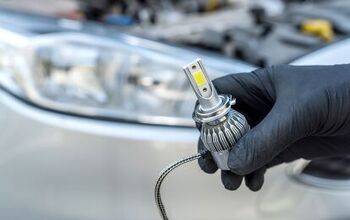


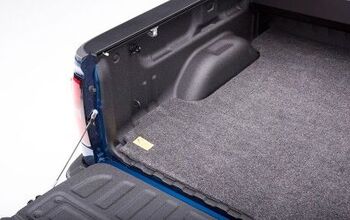


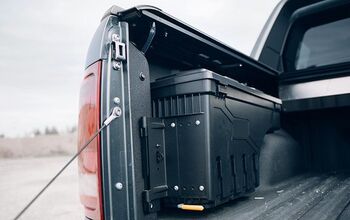




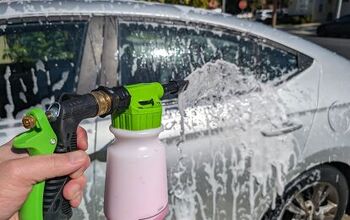



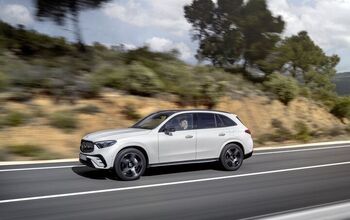

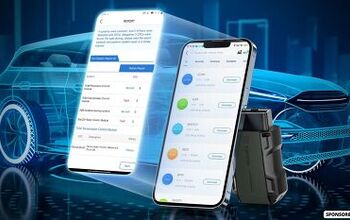
Comments
Join the conversation